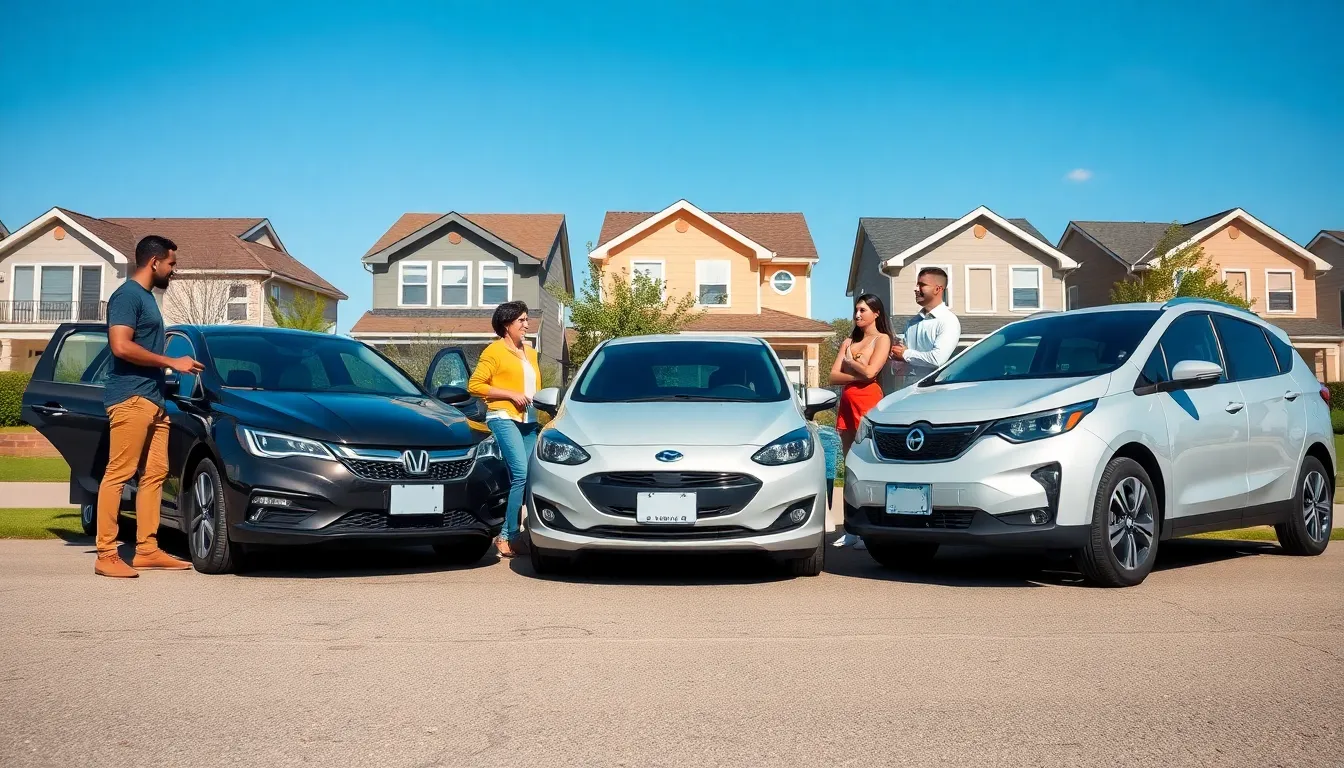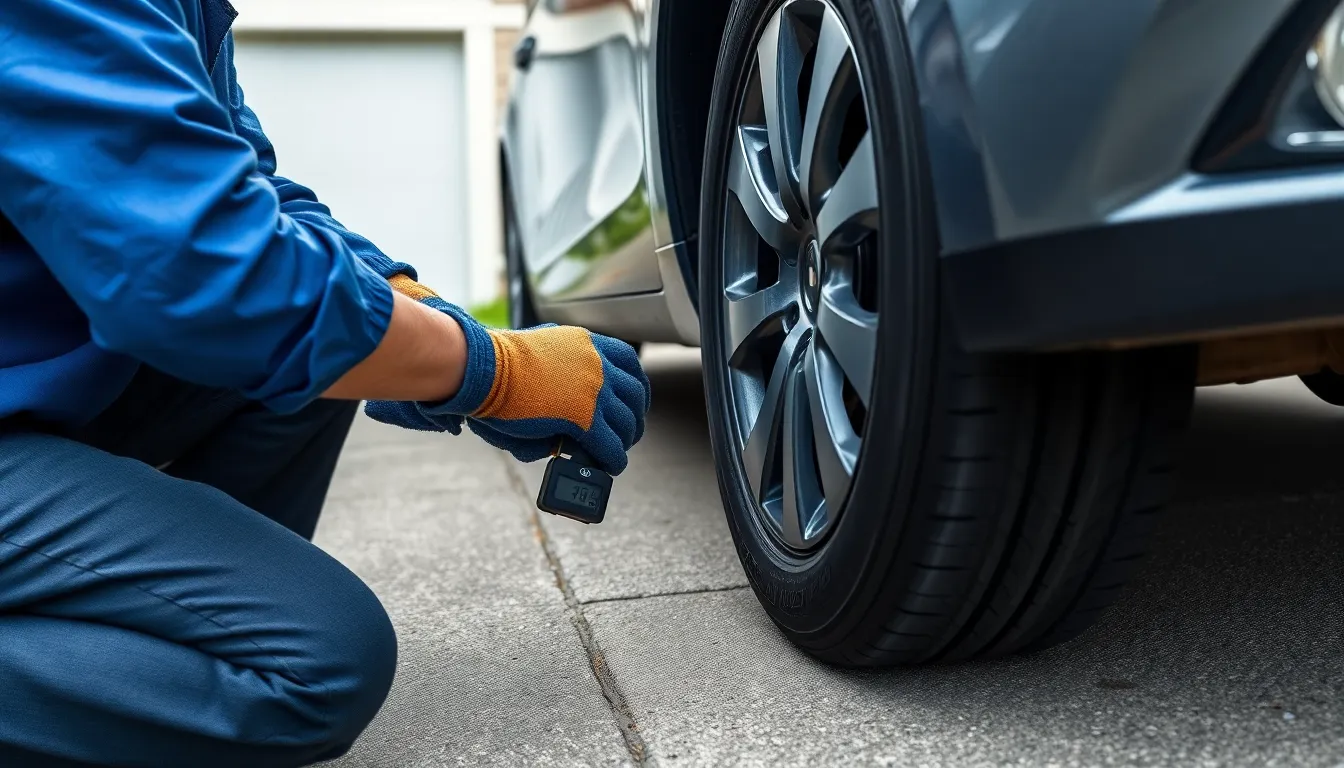We’ve all been there – standing on a car lot wondering if we’re making a smart financial decision or about to drive ourselves into debt. The relationship between money and cars is one of the most complex financial puzzles we face as consumers.
Cars aren’t just transportation anymore. They’re status symbols financial investments and often our second-largest expense after housing. Yet most of us approach car buying with our hearts instead of our heads making decisions that can impact our financial health for years to come.
Whether you’re buying your first car upgrading your current ride or wondering if that luxury vehicle is worth the monthly payments we’ll guide you through the financial maze of car ownership. From hidden costs to smart financing strategies we’re here to help you make decisions that’ll keep both your wallet and your driveway happy.
The True Cost of Car Ownership: Hidden Expenses You Need to Know
Most buyers focus solely on the sticker price and monthly payments, but we’ve discovered that these visible costs represent just the tip of the financial iceberg. Understanding these hidden expenses helps us make smarter decisions that protect our long-term financial health.
Insurance Premiums and Coverage Options
Full coverage insurance costs vary dramatically based on multiple factors that many car owners overlook during the purchasing process. We typically see annual premiums ranging from $1,200 to $3,500 for comprehensive coverage, depending on vehicle type, driver history, and location.
Luxury vehicles and sports cars command significantly higher premiums because they’re expensive to repair and attractive to thieves. A BMW M3 might cost $4,200 annually to insure, while a Honda Civic costs around $1,800 for similar coverage levels.
Geographic location impacts insurance rates by up to 300% in some cases. Urban areas with high crime rates like Detroit or Miami generate much higher premiums than rural locations in states like Vermont or North Dakota.
Coverage options create additional cost layers that we must consider carefully:
- Collision coverage adds $400-800 annually
- Comprehensive protection increases premiums by $300-600
- Gap insurance costs $20-40 monthly through dealers
- Roadside assistance typically runs $25-50 per year
Maintenance and Repair Costs
Routine maintenance expenses accumulate faster than most owners anticipate throughout a vehicle’s lifespan. We calculate that basic maintenance costs average $1,200-2,000 annually for most vehicles, with luxury brands reaching $3,000-5,000.
Oil changes represent just the beginning of ongoing expenses that multiply quickly:
- Regular oil changes: $50-120 every 5,000-10,000 miles
- Tire replacements: $800-1,500 every 40,000-60,000 miles
- Brake pad replacements: $300-800 every 25,000-50,000 miles
- Battery replacements: $150-400 every 3-5 years
Major repair costs can devastate budgets without warning when vehicles age beyond warranty coverage. Transmission repairs range from $3,000-5,000, while engine problems can exceed $8,000 for complex modern vehicles.
European luxury vehicles generate particularly high maintenance bills due to specialized parts and labor requirements. Mercedes-Benz and BMW owners spend 2-3 times more on repairs compared to Toyota or Honda drivers over a 10-year period.
Depreciation and Resale Value
Vehicle depreciation represents the largest hidden cost that silently erodes our investment from day one. New cars lose 20-25% of their value immediately upon purchase, with total depreciation reaching 60-70% after five years.
Different vehicle categories depreciate at varying rates that significantly impact long-term costs:
| Vehicle Type | Year 1 Loss | 5-Year Total Loss |
|---|---|---|
| Luxury Sedans | 28-35% | 65-75% |
| Economy Cars | 18-22% | 55-60% |
| Pickup Trucks | 15-20% | 45-50% |
| Electric Vehicles | 25-30% | 60-65% |
Mileage and condition directly correlate with resale value in predictable ways. Vehicles with over 100,000 miles typically retain only 30-40% of their original value, while well-maintained cars with lower mileage can preserve 45-55%.
Market timing affects resale values substantially when we decide to sell or trade. Economic downturns, gas price fluctuations, and new model releases can reduce resale values by 10-15% within months.
Certified pre-owned programs help minimize depreciation losses by purchasing vehicles that have already absorbed the steepest value drops. Cars 2-3 years old with 20,000-40,000 miles offer the best balance between depreciation avoidance and reliability.
Smart Car Financing Options: Loans vs. Leases vs. Cash Purchases

Choosing the right financing method can save you thousands of dollars over time. We’ll break down each option to help you make the smartest financial decision for your exact situation.
Traditional Auto Loans and Interest Rates
Traditional auto loans offer ownership benefits that make them attractive for many buyers. Banks, credit unions, and dealerships provide financing options with terms typically ranging from 36 to 84 months. Your credit score directly impacts your interest rate, with excellent credit (750+) securing rates as low as 3-5%, while poor credit can result in rates exceeding 15%.
Interest rates fluctuate based on several key factors beyond your credit score. The loan term affects your rate, with shorter terms generally offering lower rates but higher monthly payments. Vehicle age also matters since lenders view used cars as riskier investments. New car loans typically offer promotional rates, sometimes as low as 0% for qualified buyers during special sales events.
Monthly payments depend on the loan amount, interest rate, and term length. We recommend keeping your total monthly vehicle expenses under 15% of your gross monthly income. A $30,000 loan at 5% interest over 60 months results in payments around $566 monthly. Extending to 72 months drops payments to $483 but increases total interest paid by nearly $1,000.
Down payments significantly impact your loan terms and monthly obligations. Putting down 20% or more helps you avoid being underwater on your loan immediately after purchase. Larger down payments also demonstrate financial stability to lenders, potentially securing better interest rates. We suggest saving at least 10% of the vehicle’s price for a down payment, plus additional funds for taxes, fees, and initial maintenance.
Lease Agreements and Monthly Payments
Lease agreements function as long term rental contracts that provide access to newer vehicles with lower monthly payments. Most leases run 24 to 48 months and include mileage restrictions typically ranging from 10,000 to 15,000 miles annually. Exceeding these limits results in excess mileage charges of $0.15 to $0.35 per mile, which can add hundreds to your final bill.
Monthly lease payments are calculated using the vehicle’s depreciation during your lease term. Luxury vehicles often lease well because their higher residual values result in lower monthly payments compared to their purchase equivalents. A $50,000 luxury sedan might lease for $450 monthly while financing would require $650+ monthly payments.
Upfront costs for leases include the first month’s payment, security deposit, acquisition fee, and taxes. These costs typically range from $2,000 to $4,000 depending on the vehicle and lease terms. Some manufacturers offer special lease deals with reduced or eliminated upfront costs to attract customers.
End of lease obligations can catch lessees off guard with unexpected charges. Normal wear and tear is acceptable, but excessive damage results in fees ranging from hundreds to thousands of dollars. Professional inspections before lease return help identify potential charges, allowing time for cost effective repairs at independent shops rather than dealership service centers.
Paying Cash: Pros and Cons
Cash purchases eliminate financing costs and provide immediate full ownership of your vehicle. We calculate that paying cash for a $25,000 car saves approximately $3,000 to $5,000 in interest charges compared to financing over five years. This approach also simplifies the buying process by removing loan approvals, credit checks, and monthly payment obligations.
Negotiating advantages favor cash buyers since dealerships receive immediate payment without financing complications. Cash offers can sometimes secure additional discounts of 2-5% off the negotiated price. Dealers prefer cash transactions because they eliminate financing fallthrough risks that can occur when buyer credit applications get denied after agreements are signed.
Opportunity costs represent the biggest drawback of cash purchases for financially savvy buyers. Money tied up in a depreciating vehicle can’t generate investment returns elsewhere. If you can earn 7% annually through investments while securing auto financing at 4%, keeping your cash invested makes more financial sense even though paying loan interest.
Emergency fund considerations become critical when contemplating large cash purchases. We recommend maintaining 3-6 months of living expenses in easily accessible savings accounts. Using your entire emergency fund for a car purchase leaves you vulnerable to unexpected financial challenges like job loss, medical bills, or major home repairs.
Budget-Friendly Car Shopping: Finding Quality Vehicles Without Breaking the Bank

Smart car shopping means finding the sweet spot between quality and affordability. We’ll explore proven strategies to secure reliable vehicles without compromising our financial stability.
Used Car Market Research and Inspection Tips
Research transforms our used car shopping experience from guesswork into well-informed choice making. We recommend starting with online tools like Kelley Blue Book, Edmunds, and AutoTrader to establish fair market values for exact makes and models. Vehicle history reports through Carfax or AutoCheck reveal crucial information about accidents, flood damage, and previous ownership patterns.
Inspect the exterior for rust spots, dents, and paint inconsistencies that indicate previous damage or poor maintenance. We should examine tire wear patterns, as uneven wear suggests alignment issues or suspension problems. Interior inspection includes testing all electronic components like air conditioning, radio, power windows, and charging ports.
Engine bay examination reveals maintenance quality through cleanliness, fluid levels, and visible wear on belts and hoses. We always recommend bringing a trusted mechanic for pre-purchase inspections on vehicles over $5,000. Test drives should include city streets, highway speeds, and parking lot maneuvers to assess transmission smoothness and steering responsiveness.
Document everything during inspections using photos and notes to compare multiple vehicles objectively. Negotiation power increases significantly when we identify exact issues that affect the vehicle’s value or safety.
Certified Pre-Owned Vehicle Programs
Certified pre-owned programs bridge the gap between new and used car shopping with manufacturer backed warranties. We find these programs particularly valuable for luxury brands like BMW, Mercedes-Benz, and Audi, where repair costs typically exceed those of mainstream vehicles.
Manufacturer certification requirements usually include age limits under 6 years, mileage caps around 80,000 miles, and comprehensive multi-point inspections covering 100-300 components. Extended warranties through CPO programs often provide coverage for 12 months or 12,000 miles beyond the original factory warranty.
Financial benefits include lower interest rates compared to traditional used car loans, with many manufacturers offering rates similar to new vehicle financing. We’ve observed CPO interest rates ranging from 2.9% to 5.9% compared to 6% to 12% for standard used car loans.
Popular CPO programs worth considering include Toyota Certified Used Vehicles with 160-point inspections and Honda Certified Pre-Owned with powertrain warranties up to 100,000 miles. Premium brands like Lexus and Acura offer even more comprehensive coverage with roadside assistance and loaner vehicle programs.
Quality standards vary between manufacturers, so we recommend comparing exact warranty terms, inspection criteria, and included services before making decisions. Third party certified programs from dealers typically offer less comprehensive coverage than manufacturer sponsored options.
End-of-Year Dealership Incentives
December shopping delivers substantial savings opportunities as dealerships clear inventory for new model year vehicles. We consistently see the highest rebates and incentives during the final weeks of December, with manufacturers offering cash back amounts reaching $3,000 to $7,000 on outgoing model years.
Model year clearance events target vehicles that have been sitting on lots for extended periods, creating win-win scenarios for both buyers and dealers. Inventory management pressures motivate dealers to negotiate aggressively on pricing, financing terms, and trade-in values.
Timing strategies include shopping during the last week of December when dealer quotas and manufacturer incentives align for maximum savings potential. We recommend having pre-approved financing from banks or credit unions to compare against dealer financing offers during these high-pressure sales periods.
Regional variations affect incentive availability, with areas experiencing slower sales typically offering more aggressive rebates. Snow belt regions often provide additional incentives on convertibles and sports cars during winter months.
Manufacturer exact programs worth monitoring include GM’s year-end employee pricing, Ford’s Red Carpet Lease programs, and Chrysler’s seasonal cash allowances. We suggest subscribing to manufacturer newsletters and dealer communications starting in October to track developing incentive programs.
Fuel Efficiency: How Your Car Choice Impacts Your Monthly Budget

Your vehicle’s fuel efficiency directly affects your monthly expenses more than most people realize. Understanding these costs helps you make smarter purchasing decisions that align with your budget.
Gas-Powered vs. Hybrid vs. Electric Vehicle Costs
Gas-powered vehicles typically offer lower upfront costs but higher ongoing fuel expenses. We see traditional internal combustion engines averaging 25-30 MPG for most sedan models, resulting in monthly fuel costs ranging from $120-200 depending on driving habits and local gas prices.
Hybrid vehicles combine gas engines with electric motors to reduce fuel consumption significantly. These models often achieve 40-50 MPG, cutting monthly fuel expenses by 30-40% compared to traditional gas vehicles. Popular hybrids like the Toyota Prius and Honda Accord Hybrid demonstrate how this technology translates to real savings at the pump.
Electric vehicles eliminate gas costs entirely but shift expenses to electricity consumption. Most EV owners spend $30-60 monthly on charging at home, depending on local electricity rates and driving distance. Tesla Model 3 owners report average monthly charging costs of $45, while Nissan Leaf drivers often spend even less due to the vehicle’s smaller battery capacity.
Annual Fuel Consumption Calculations
Calculate your potential savings using this simple formula: (annual miles driven ÷ vehicle MPG) × average gas price = yearly fuel cost. For example, driving 12,000 miles annually in a 25 MPG vehicle with $3.50 gas costs approximately $1,680 per year.
Compare different vehicle types to understand long-term financial impact:
| Vehicle Type | MPG/Efficiency | Annual Miles (12,000) | Annual Fuel Cost |
|---|---|---|---|
| Standard Gas | 25 MPG | 480 gallons | $1,680 |
| Hybrid | 45 MPG | 267 gallons | $935 |
| Electric | 120 MPGe | 100 kWh/month | $480 |
Track your current spending by monitoring gas receipts for three months, then multiply by four for an accurate annual estimate. Many drivers underestimate their actual fuel consumption, making this calculation essential for budget planning.
Tax Credits and Incentives for Eco-Friendly Cars
Federal tax credits provide up to $7,500 for qualifying electric vehicles, though this amount phases out once manufacturers sell 200,000 eligible vehicles. Tesla and General Motors have exceeded this threshold, but Ford, Hyundai, and other brands still offer full credits to qualifying buyers.
State incentives vary significantly by location but can add thousands in additional savings. California offers rebates up to $7,000 for electric vehicles, while Colorado provides $4,000 credits. New York’s Drive Clean Rebate program gives up to $2,000 for electric vehicle purchases.
Utility company programs often provide charging equipment rebates and discounted electricity rates for EV owners. Pacific Gas & Electric offers $500 rebates for home charging stations, while Austin Energy provides special EV charging rates that reduce costs by 50% during off-peak hours.
Workplace incentives include preferred parking spots, free charging stations, and sometimes direct financial benefits for employees who purchase eco-friendly vehicles. Many companies now offer $2,000-5,000 bonuses for employees who choose electric or hybrid vehicles as part of their sustainability initiatives.
Car Insurance Money-Saving Strategies: Reducing Your Premium Costs

Car insurance represents one of the largest ongoing expenses in vehicle ownership, but strategic approaches can significantly reduce these monthly costs. We’ll explore proven methods that help drivers lower their premiums while maintaining adequate coverage.
Comparison Shopping and Bundle Discounts
Shopping across multiple insurance providers reveals dramatic price differences for identical coverage levels. We recommend obtaining quotes from at least five different insurers, as premiums can vary by hundreds of dollars annually for the same driver profile. Online comparison tools like Progressive’s Snapshot, GEICO’s quote system, and independent sites such as The Zebra streamline this process by providing side-by-side rate comparisons.
Bundle discounts offer substantial savings when you combine auto insurance with other policies. Most major insurers provide multi-policy discounts ranging from 5% to 25% when you add homeowners, renters, or life insurance to your auto coverage. State Farm customers typically save 17% on average through bundling, while Allstate offers discounts up to 25% for multiple policy combinations.
Loyalty doesn’t always pay when it comes to insurance premiums. We’ve found that staying with the same insurer for years often results in higher rates compared to switching providers. Annual rate reviews help identify better deals, especially since many companies offer introductory discounts to attract new customers.
Professional and organizational affiliations unlock additional discount opportunities. Teachers, military personnel, government employees, and members of organizations like AAA, AARP, or professional associations often qualify for group discounts ranging from 3% to 15% off standard rates.
Safe Driver Programs and Telematics
Usage-based insurance programs monitor your driving habits to determine personalized premium rates. Progressive’s Snapshot, State Farm’s Drive Safe & Save, and Allstate’s Drivewise track factors like hard braking, rapid acceleration, phone use while driving, and total miles driven. Safe drivers typically see discounts between 10% and 30% on their premiums.
Telematics devices or smartphone apps collect real-time driving data for more accurate risk assessment. These programs measure driving behaviors such as smooth acceleration, gentle braking, adherence to speed limits, and avoiding late-night driving. Participants who demonstrate consistently safe driving patterns earn the maximum available discounts.
Mileage-based programs benefit low-mileage drivers who work from home or use alternative transportation. Companies like Metromile offer pay-per-mile insurance where drivers pay a base rate plus a per-mile charge, often resulting in savings of 20% to 40% for those driving fewer than 10,000 miles annually.
Completing defensive driving courses can reduce premiums and improve your driving record. Many states mandate insurance discounts for drivers who complete approved defensive driving programs, with savings typically ranging from 5% to 10% and lasting for three years.
Deductible Adjustments and Coverage Optimization
Increasing your comprehensive and collision deductibles significantly lowers your monthly premium costs. Moving from a $250 deductible to $1,000 can reduce premiums by 15% to 30%, though you’ll pay more out of pocket if you file a claim. We suggest choosing a deductible amount you can comfortably afford in an emergency situation.
Dropping unnecessary coverage on older vehicles helps reduce overall insurance expenses. If your car’s value falls below $3,000 to $4,000, comprehensive and collision coverage may cost more than potential claim payouts. Calculate whether the annual premium exceeds 10% of your vehicle’s current market value to determine if coverage remains worthwhile.
Adjusting liability limits based on your assets protects your financial situation appropriately. While minimum state requirements might seem attractive for budget reasons, insufficient coverage can expose you to lawsuits that exceed policy limits. We recommend liability coverage that matches or exceeds your total net worth.
Credit score improvements directly correlate with lower insurance premiums in most states. Insurers use credit-based insurance scores to predict claim likelihood, with excellent credit resulting in premiums up to 50% lower than those with poor credit. Paying bills on time, reducing credit utilization, and monitoring your credit report can lead to important insurance savings over time.
DIY Car Maintenance: Simple Tasks That Save Hundreds Annually

Learning to handle basic car maintenance tasks yourself can dramatically reduce your annual vehicle expenses. We’ll show you how these simple procedures can save hundreds of dollars each year while keeping your car running smoothly.
Basic Oil Changes and Fluid Checks
Oil changes represent the most important DIY savings opportunity, typically costing $25-40 in materials versus $60-120 at service centers. We recommend purchasing oil and filters in bulk during sales to maximize savings. Most vehicles require oil changes every 5,000-7,500 miles, depending on your driving conditions and oil type.
Checking transmission fluid takes five minutes but prevents costly repairs that can exceed $3,000. We suggest checking fluid levels monthly when the engine is warm and the vehicle is on level ground. Low or dark fluid indicates potential problems that require immediate attention.
Brake fluid monitoring helps identify issues before they become expensive safety hazards. We advise checking brake fluid every three months, looking for proper levels and clear, amber colored liquid. Dark or contaminated brake fluid signals the need for a complete system flush.
Coolant system maintenance prevents overheating damage that can cost thousands in engine repairs. We recommend checking coolant levels weekly and flushing the system every 30,000 miles or as specified in your owner’s manual.
Tire Rotation and Pressure Monitoring
Tire rotation extends tire life by 20,000-30,000 miles, saving $400-800 on replacement costs annually. We perform rotations every 6,000-8,000 miles using a simple cross pattern for front wheel drive vehicles. This process takes 30 minutes with basic tools and prevents uneven wear patterns.
Pressure monitoring improves fuel economy by 3-5% and prevents premature tire failure. We check tire pressure monthly using a digital gauge, maintaining manufacturer recommended PSI levels found on the driver’s door jamb. Under inflated tires reduce fuel efficiency and create dangerous blowout conditions.
Tread depth measurement using the penny test helps determine replacement timing. We insert a penny into tire grooves with Lincoln’s head upside down – if you see the top of his head, it’s time for new tires. This simple check prevents costly emergency replacements and maintains safe driving conditions.
Wheel alignment indicators include uneven tire wear and vehicle pulling to one side. We recommend professional alignment checks annually, but monitoring these signs helps catch problems early before they damage expensive tires.
Air Filter and Battery Replacement
Engine air filter replacement costs $15-25 for the filter versus $40-80 at service centers. We change air filters every 12,000-15,000 miles or when they appear dirty during visual inspection. Clean filters improve fuel economy by up to 10% and protect expensive engine components from debris.
Cabin air filter changes improve air quality and HVAC system efficiency for $10-20 in materials. We replace these filters annually or every 15,000 miles, especially important for drivers with allergies. Clogged cabin filters force your air conditioning system to work harder, increasing fuel consumption.
Battery maintenance includes cleaning terminals and checking voltage levels monthly. We use a mixture of baking soda and water to remove corrosion, then apply petroleum jelly to prevent future buildup. This simple maintenance extends battery life by 1-2 years, saving $100-200 in replacement costs.
Battery replacement becomes necessary every 3-5 years, but we can extend lifespan through proper care. We test battery voltage using a multimeter – readings below 12.4 volts indicate replacement time. Installing batteries yourself saves $50-100 in labor charges at most auto parts stores.
Selling Your Car for Maximum Profit: Timing and Preparation Tips

Getting top dollar for your vehicle requires strategic planning and market awareness. We’ll guide you through proven techniques that maximize your return while minimizing time and effort.
Market Research and Pricing Strategies
Research begins with understanding your vehicle’s true market value across multiple platforms. We recommend checking Kelley Blue Book, Edmunds, and Cars.com to establish a baseline price range for your exact make, model, year, and mileage combination.
Local market conditions significantly impact selling prices, with urban areas typically commanding higher values than rural locations. Analyzing similar vehicles within a 50-mile radius helps identify competitive pricing opportunities and seasonal demand patterns.
Timing your sale strategically can increase profits by $500-2,000 depending on market factors. Convertibles sell best during spring months, while SUVs command premium prices before winter weather arrives.
Setting your asking price 10-15% above your target selling price creates negotiation room while attracting serious buyers. We’ve found that pricing slightly above market value initially allows flexibility during negotiations without undervaluing your asset.
Documentation strengthens your pricing position significantly when dealing with potential buyers. Maintenance records, service receipts, and vehicle history reports justify higher asking prices by demonstrating responsible ownership and care.
Vehicle Preparation and Staging
Professional detailing investments typically return 200-300% through increased sale values and faster buyer interest. Deep cleaning both interior and exterior surfaces creates positive first impressions that translate into higher offers.
Minor repairs addressing visible issues like scratches, dents, or worn components prevent buyers from negotiating important price reductions. Investing $200-500 in cosmetic improvements often yields $1,000+ in additional sale proceeds.
Staging your vehicle properly includes removing personal items, organizing maintenance records, and ensuring all systems function correctly. We suggest displaying the car in well-lit areas with clean backgrounds that highlight the vehicle’s best features.
Fresh oil changes and tire rotations signal ongoing maintenance to prospective buyers. These $100-150 investments demonstrate care while addressing common buyer concerns about immediate post-purchase expenses.
Photography quality directly impacts online listing success rates and inquiry volumes. Taking 20-30 high-resolution photos from multiple angles, including interior details and engine bay shots, increases serious buyer engagement by 40-60%.
Private Sale vs. Trade-In Value Comparison
Private sales consistently deliver 15-25% higher proceeds compared to dealer trade-in offers. This difference translates to $2,000-6,000 additional profit on vehicles valued between $15,000-30,000.
Trade-in convenience comes at a important cost premium, though it eliminates marketing time, buyer negotiations, and paperwork responsibilities. Dealers typically offer wholesale prices that account for reconditioning costs and profit margins.
Tax advantages favor trade-ins in states where sales tax applies only to the difference between new car prices and trade values. This benefit can offset some private sale profit advantages depending on your state’s tax structure.
| Sale Method | Average Profit | Time Investment | Paperwork Complexity | Tax Implications |
|---|---|---|---|---|
| Private Sale | $3,000-5,000 higher | 2-6 weeks | Moderate | Full sales tax |
| Trade-In | Wholesale value | Same day | Minimal | Reduced tax liability |
| Dealer Consignment | 10-15% higher than trade | 1-4 weeks | Low | Full sales tax |
Market conditions influence the private sale versus trade-in decision significantly. Strong seller’s markets favor private sales, while oversupplied markets make trade-in convenience more attractive even though lower returns.
Risk factors including potential buyer financing issues, title transfer complications, and safety concerns during test drives must be weighed against higher private sale profits. We recommend meeting buyers at public locations and verifying funds before completing transactions.
Emergency Car Fund: Building Financial Security for Vehicle Repairs

Beyond the basic maintenance we’ve covered, unexpected vehicle repairs represent one of the most important financial challenges car owners face. We need a dedicated emergency fund to handle these surprise expenses without derailing our overall financial stability.
Calculating Your Ideal Emergency Fund Size
Most financial experts recommend setting aside $1,000 to $3,000 for basic vehicle emergencies, but we should calculate based on our exact situation. Older vehicles typically require 15-20% more in emergency reserves due to increased breakdown frequency and parts availability issues. Luxury vehicle owners need emergency funds ranging from $3,000 to $8,000 because specialized parts and labor costs run significantly higher.
We can calculate our target amount by considering three key factors: vehicle age, annual mileage, and repair history. Vehicles over 100,000 miles statistically face major repairs costing $2,500-4,000 annually, while newer cars under warranty rarely exceed $1,500 in unexpected expenses. High mileage drivers covering more than 15,000 miles yearly should increase their emergency fund by 25-30% to account for accelerated wear patterns.
Consider your vehicle’s brand reliability ratings when determining fund size. Brands like Toyota and Honda typically require smaller emergency reserves ($1,500-2,500) due to lower repair frequencies, while European luxury brands often necessitate $4,000-6,000 reserves for their complex systems and expensive components.
Separate Savings Account Setup
Creating a dedicated car emergency account prevents us from accidentally spending these funds on non-vehicle expenses. We should open a high yield savings account specifically labeled “Car Emergency Fund” to earn interest while maintaining easy access to funds. Banks like Marcus by Goldman Sachs and Ally Bank offer competitive rates around 4-5% APY for emergency savings.
Automatic transfers make building this fund effortless and consistent. Setting up weekly transfers of $25-50 allows most people to reach their $1,500-3,000 target within 12-18 months without feeling financial strain. We can time these transfers right after payday to ensure the money moves before we’re tempted to spend it elsewhere.
Keep the emergency fund separate from daily banking accounts but accessible within 24-48 hours when needed. Money market accounts offer slightly higher interest rates than traditional savings while still providing debit card access for immediate repairs. Credit unions often provide the best combination of competitive rates and convenient access for emergency vehicle funds.
Preventive Maintenance to Avoid Major Expenses
Regular maintenance prevents 70-80% of major vehicle breakdowns that would otherwise drain our emergency fund. Oil changes every 5,000-7,500 miles cost $50-80 but prevent engine damage that could require $3,000-8,000 in repairs. We should follow manufacturer maintenance schedules precisely rather than extending intervals to save money in the short term.
Tire rotations every 6,000-8,000 miles extend tire life by 20,000-30,000 miles and cost only $25-50 per service. Neglecting this simple maintenance leads to premature tire replacement costing $600-1,200 for a full set. Regular brake inspections catch worn pads before they damage rotors, turning a $150-250 pad replacement into a $400-800 brake system overhaul.
Coolant flushes every 30,000-50,000 miles prevent overheating issues that destroy engines worth thousands to replace. Transmission fluid changes at manufacturer intervals cost $150-300 but prevent transmission rebuilds ranging from $2,500-5,000. We should view preventive maintenance as insurance premiums that protect against catastrophic repair bills that could empty our emergency fund completely.
Conclusion
The relationship between money and cars doesn’t have to drain our bank accounts or derail our financial goals. By understanding the full scope of ownership costs and implementing strategic approaches to buying financing and maintaining our vehicles we can make choices that serve both our transportation needs and our long-term financial health.
Whether we’re purchasing our first car or considering a luxury upgrade the key lies in preparation and well-informed choice-making. From building emergency funds to mastering basic maintenance skills every step we take toward financial literacy in car ownership pays dividends over time.
Smart car ownership means viewing our vehicles as tools rather than status symbols. When we prioritize value over vanity and plan for both expected and unexpected expenses we transform what’s often seen as a financial burden into a manageable part of our overall financial strategy.
Frequently Asked Questions
What are the hidden costs of car ownership beyond the monthly payment?
Hidden costs include insurance premiums, routine maintenance, repairs, registration fees, and depreciation. Insurance can vary significantly based on vehicle type and location. Luxury vehicles typically require more expensive maintenance and repairs. Factor in fuel costs, parking fees, and potential financing charges to get the true cost of ownership.
How much should I budget for total monthly vehicle expenses?
Keep total monthly vehicle expenses under 15% of your gross monthly income. This includes loan payments, insurance, fuel, and estimated maintenance costs. This guideline helps prevent overextending yourself financially and ensures you can handle unexpected repairs without compromising your budget.
Should I buy new, used, or certified pre-owned?
Certified pre-owned vehicles often provide the best value, offering manufacturer warranties with lower depreciation than new cars. New cars lose significant value immediately. Used cars can be cost-effective but may lack warranties. Consider your budget, reliability needs, and how long you plan to keep the vehicle.
Is it better to finance, lease, or pay cash for a car?
Each option has advantages depending on your situation. Financing builds equity but includes interest costs. Leasing offers lower monthly payments but no ownership. Cash purchases eliminate interest and provide negotiating power but tie up capital that could be invested elsewhere. Consider your financial goals and cash flow needs.
How can I save money on car insurance?
Compare quotes from multiple providers annually, bundle policies for discounts, maintain a good credit score, and consider higher deductibles. Take advantage of safe driver programs, low-mileage discounts, and telematics programs. Drop unnecessary coverage on older vehicles and adjust liability limits based on your assets.
What basic car maintenance can I do myself to save money?
Simple DIY tasks include oil changes, checking fluid levels, tire rotations, and air filter replacements. Home oil changes can save $25-80 per service. Regular tire maintenance extends tire life and improves fuel efficiency. Monitor battery health and fluid levels to prevent costly repairs and breakdowns.
When is the best time to buy or sell a car?
Buy during end-of-year dealership incentives when dealers clear inventory for new models. Sell before major repairs are needed or when your vehicle still has warranty coverage. Research local market conditions and seasonal demand patterns. Spring and summer typically offer better selling conditions than winter months.
How much should I save for a car emergency fund?
Build an emergency fund of $1,000-$3,000 for basic vehicles, with higher amounts for older or luxury cars. Calculate based on your vehicle’s age, mileage, and repair history. Set up a dedicated savings account for easy access. This fund protects against unexpected repairs and prevents debt accumulation.
How do electric and hybrid vehicles affect my budget?
Electric and hybrid vehicles typically have lower fuel costs and reduced maintenance needs but higher upfront prices. Consider available tax credits and incentives that can offset purchase costs. Calculate long-term savings based on your driving patterns and local electricity rates versus gas prices to determine overall value.
What’s the best way to get maximum value when selling my car?
Research your vehicle’s market value, prepare proper documentation, and invest in professional detailing and minor repairs. Set asking prices slightly above target to allow negotiation room. Private sales typically yield higher profits than trade-ins but require more time and effort. Consider timing and local market conditions.

